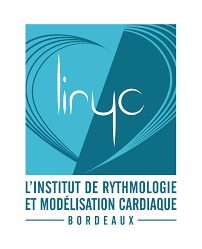- Home
- Research
- Spectroscopy and Imaging
- Projects
- Archive
- MULTIFIB
MULTIFIB
Runtime: 01.04.2019 - 30.03.2022
Just in Europe, approximately 350,000 men and women are affected by sudden cardiac death each year. One of the main causes of sudden cardiac death is a cardiac arrhythmia, e.g. ventricular fibrillation. In most cases, the cause of ventricular fibrillation is damage to the heart muscle, often triggered by an acute heart attack. Under certain conditions, measures can be taken to prevent ventricular fibrillation or recurrent ventricular fibrillation. In addition to the use of implantable defibrillators (ICD), this is possible, for example, through ablation therapy. Once critical areas have been identified, they can be destroyed locally (sclerosed). As a result, scar tissue (fibrosis) forms, which destroys the cardiac muscle tissue responsible for the development of the arrhythmia. Due to the low local resolution of current analytical methods, it is often difficult to identify the critical areas or to ensure a complete scar formation and thus an optimal therapy.
The goal of the MultiFib project is to overcome these previous limitations of in vivo detection and characterization of structural remodeling. To achieve this goal, three optical modalities, i.e. Raman spectroscopy, frequency doubling and optical coherence tomography, will be used. These modalities provide complementary, i.e. both chemical and morphological, information on structural remodeling. To combine these modalities, a diagnostic fiber optic probe is being developed that will enable high-resolution localization of structural and chemical heterogeneous regions. Mathematical models will be used to interpret these data to ensure improved therapy monitoring on the one hand, and to contribute to a better understanding of the disease pattern on the other.
The European Commission is funding MultiFib under the number 01KL1904 as part of the ERA-NET program in Horizon 2020 until April 2021.
Partners



